Pothos is an easy-to-grow houseplant that can brighten up any indoor space. It’s also known as Epipremnum aureum. This Ultimate guide on Pothos will enlighten you on how to take care of the plant, its benefits and history.
“I have a green thumb, but not because I have a lot of experience. I have a green thumb because I have a lot of Pothos.” -Nellie Neal
Pothos is a versatile plant that can be grown in a variety of ways. Whether you allow it to trail down from a hanging basket or climb up a trellis, pothos is sure to add a touch of green to your home.
Furthermore, It’s a fast-growing plant, so it’s perfect for those who want instant results. And, since it’s tolerant of low light conditions, pothos is ideal for rooms that don’t get a lot of sun. Plus, this hardy plant is practically indestructible, so even those with a black thumb can keep it alive.
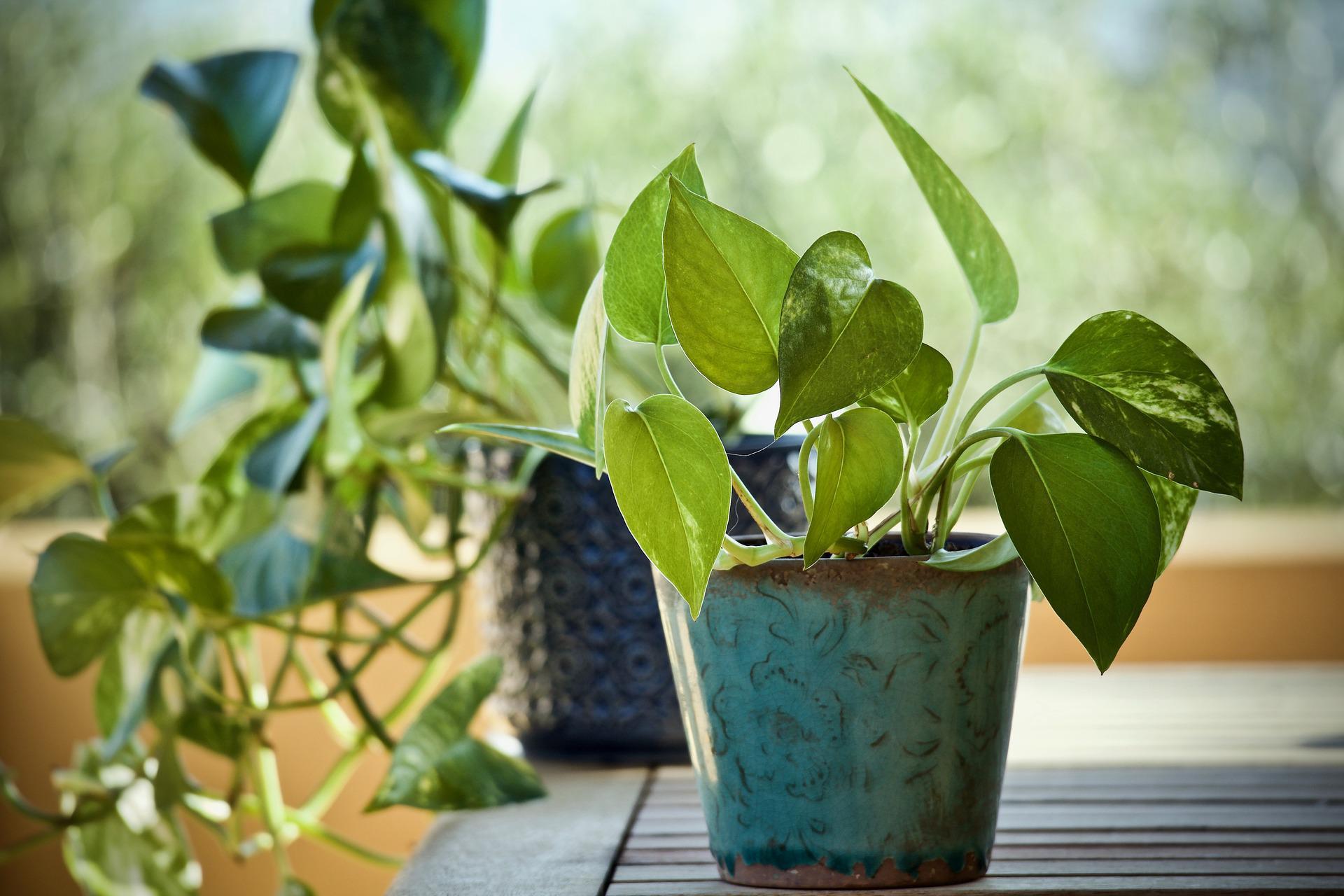
Credit: Pixabay
If you’re looking for an easy-care houseplant, pothos should be at the top of your list. It’s a great way to add a splash of green to your home, office, or even garden! They are easy to care for and can tolerate a wide range of growing conditions.
The History And Origins Of Pothos Plants
The pothos plant is a native of the Society Islands in the South Pacific. It is a member of the arum family, which includes such plants as the calla lily and the anthurium. The Pothos is a climbing vine that can reach a length of up to 20 feet. The leaves are large, heart-shaped, and have a glossy surface. The plant produces small, greenish-white flowers, but they are seldom seen in cultivation.
In addition, Pothos plants are relatively easy to grow and are popular houseplants. They can be grown in soil or hydroponically. Likewise, they’re used in some cultures as a traditional medicine.
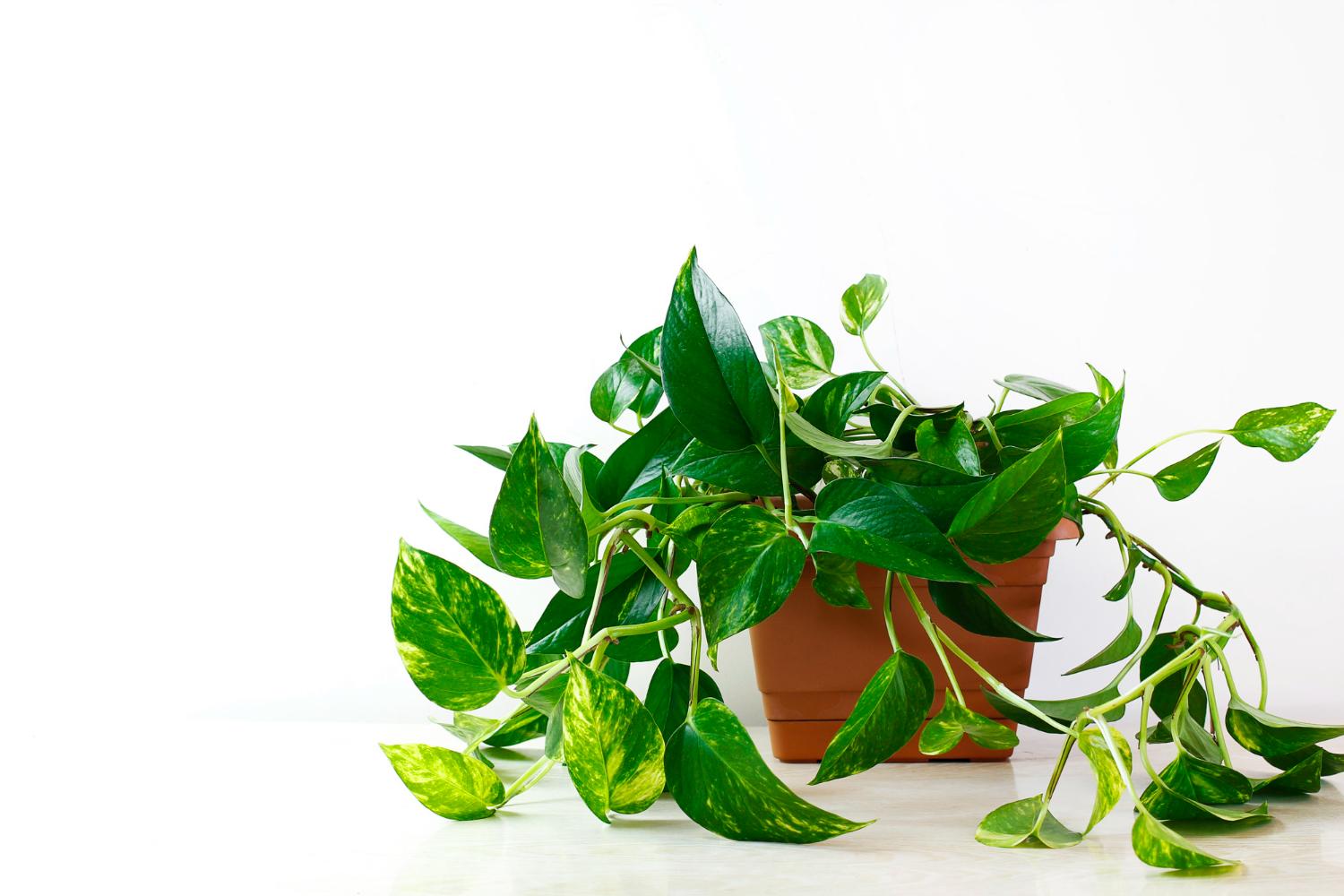
Credit: Freepik
The pothos plant is believed to have originated in the Society Islands in the South Pacific. It is a member of the arum family, which includes such plants as the calla lily and the anthurium.
The Different Uses For Pothos Plants
Pothos plants are not only aesthetically pleasing, but they also have a variety of uses. Here are some of the different ways you can use pothos plants:
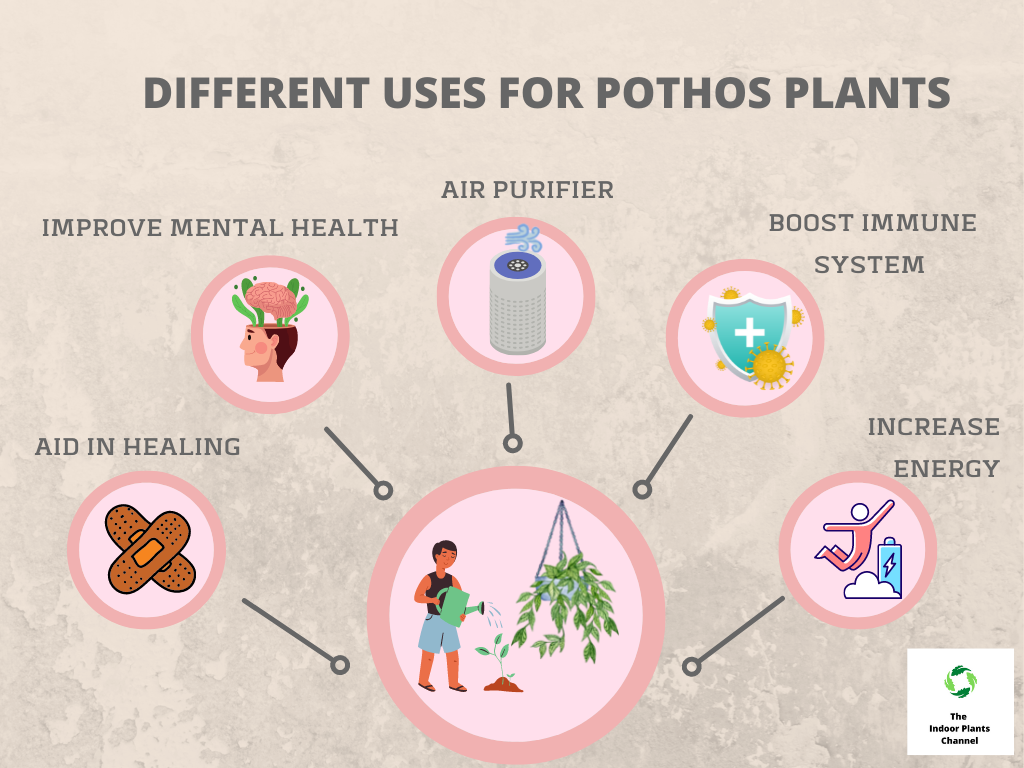
- Air Purification: Pothos plants are great at purifying the air. They can remove harmful toxins and chemicals from the air, making it safer to breathe.
- Improve Mental Health: Pothos plants have been shown to improve mental health. They can help reduce stress and anxiety, and improve mood and focus.
- Boost Immune System: Pothos plants can help boost the immune system. They can help fight off infection and disease, and keep the body healthy.
- Aid in Healing: Pothos plants have been used to aid in healing. They can help speed up the healing process, and reduce pain and inflammation.
- Increase Energy: Pothos plants have been shown to increase energy levels. They can help improve stamina and endurance, and help you stay alert and focused.
The Myths And Legends Surrounding Pothos Plants
Pothos plants are a type of plant that has many myths and legends surrounding them.
- Some people believe that pothos plants are lucky and can bring good luck to their home. Others believe that pothos plants are bad luck and should be avoided.
- Also, there’s this belief that pothos plants are lucky and can bring good luck to their home. Some people, however, believe it’s the opposite.
- Another myth around pothos plants is that they’re lucky plants because they require low maintenance and can thrive in many different types of environments. They are also known for being very resilient and being able to bounce back after being neglected.
- Others believe that pothos plants are bad luck because they are often associated with death and darkness.
- In some cultures, pothos plants are thought to be able to absorb negative energy and they are sometimes used in funerals.
Whatever you believe, pothos plants are definitely interesting and have a long history. If you’re looking for a plant that is easy to care for and has a lot of meaning behind it, then a Pothos plant might be the perfect choice for you.

Credit: Pixabay
Tips For Growing Pothos Plants
- Choose a spot that receives indirect sunlight. Pothos plants can tolerate low light levels, but they will grow best in bright, indirect light.
- Water your pothos plant when the top inch of soil is dry. Allow the plant to drain thoroughly after watering.
- Fertilize your pothos plant monthly during the growing season (spring and summer). Use a balanced fertilizer diluted to half strength.
- Prune your pothos plant as needed to keep it looking its best. You can cut back the stems to encourage new growth, or remove yellow or dying leaves.
- Pothos plants are susceptible to mealybugs, aphids, and scale. Keep an eye out for these pests and treat them accordingly.
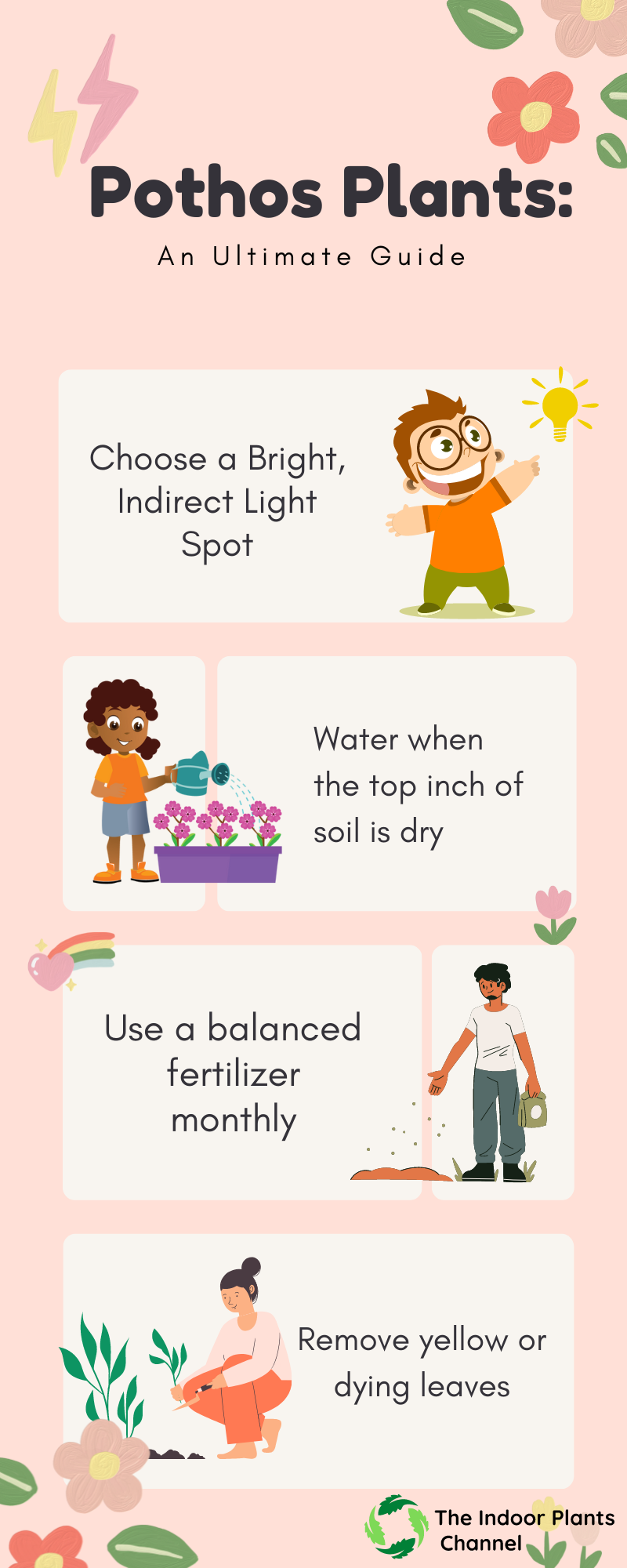
The Benefits Of Pothos Plants
- Pothos plants are known for their ability to purify the air. They can remove harmful toxins and chemicals from the air, making it safer to breathe.
- Pothos plants also help to improve the quality of the air. They can increase the amount of oxygen in the air and help to improve the circulation of air.
- Pothos plants can also help to reduce stress and anxiety. They can help to create a feeling of calm and relaxation.
The Different Types Of Pothos Plants
Pothos plants come in many different varieties, each with their own unique features. Here are some of the most popular types of pothos plants:
1. Neon Pothos

Credit: Pexels
As the name suggests, this variety of pothos is known for its bright, neon-colored leaves. Neon pothos is a great plant for brightening up any room and is relatively easy to care for.
2. Marble Queen Pothos
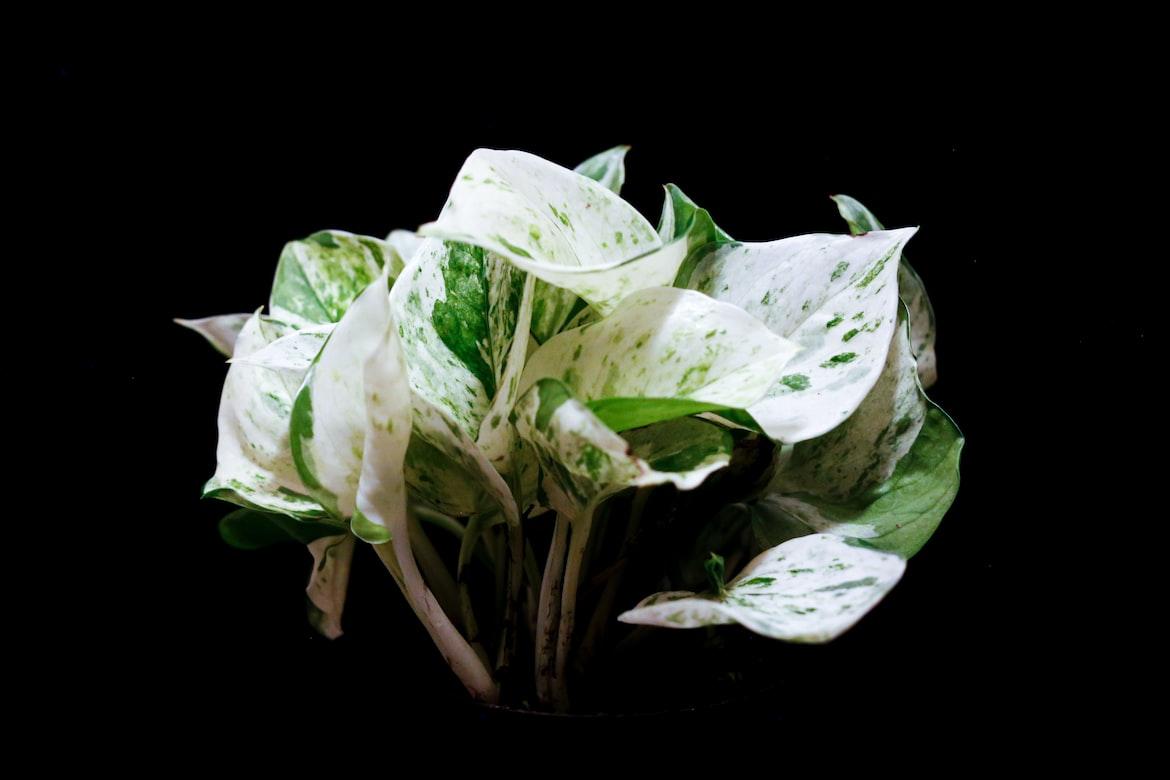
Credit: Unsplash
This pothos variety is characterized by its beautiful variegated leaves, which are green with white streaks running through them. Marble Queen pothos is a bit more finicky than other types of pothos and requires more attention when it comes to watering and fertilizing.
3. Golden Pothos

Credit: Freepik
As the name implies, this pothos variety has golden-yellow leaves. Golden pothos is one of the easiest plants to care for and is a great choice for beginners.
4. Pearls and Jade Pothos
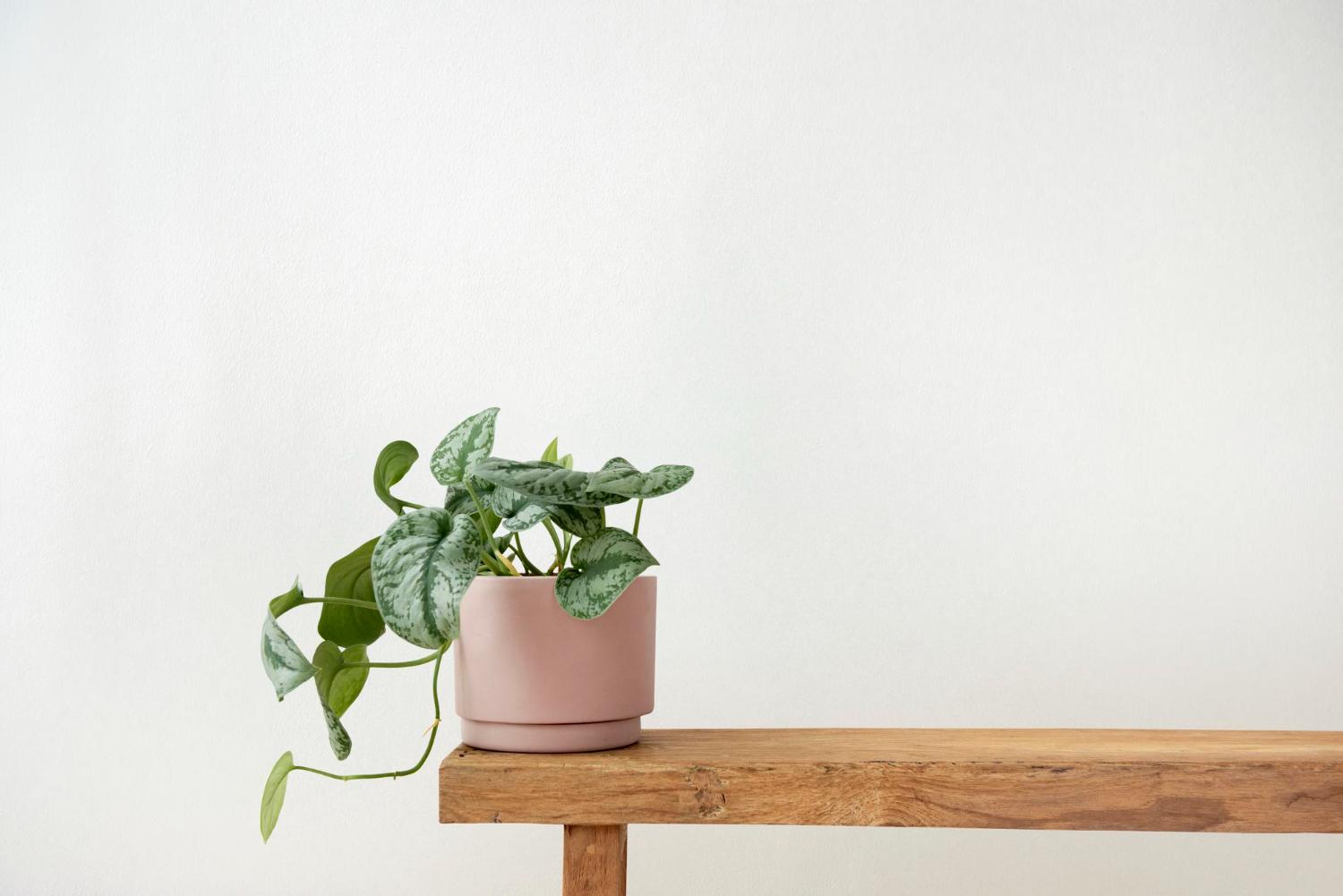
Credit: Freepik
This type of pothos is known for its pretty variegated leaves, which are green with white and pink streaks. Pearls and Jade pothos are a bit more delicate than other types of pothos and require more careful watering and fertilizing.
5. Manjula Pothos
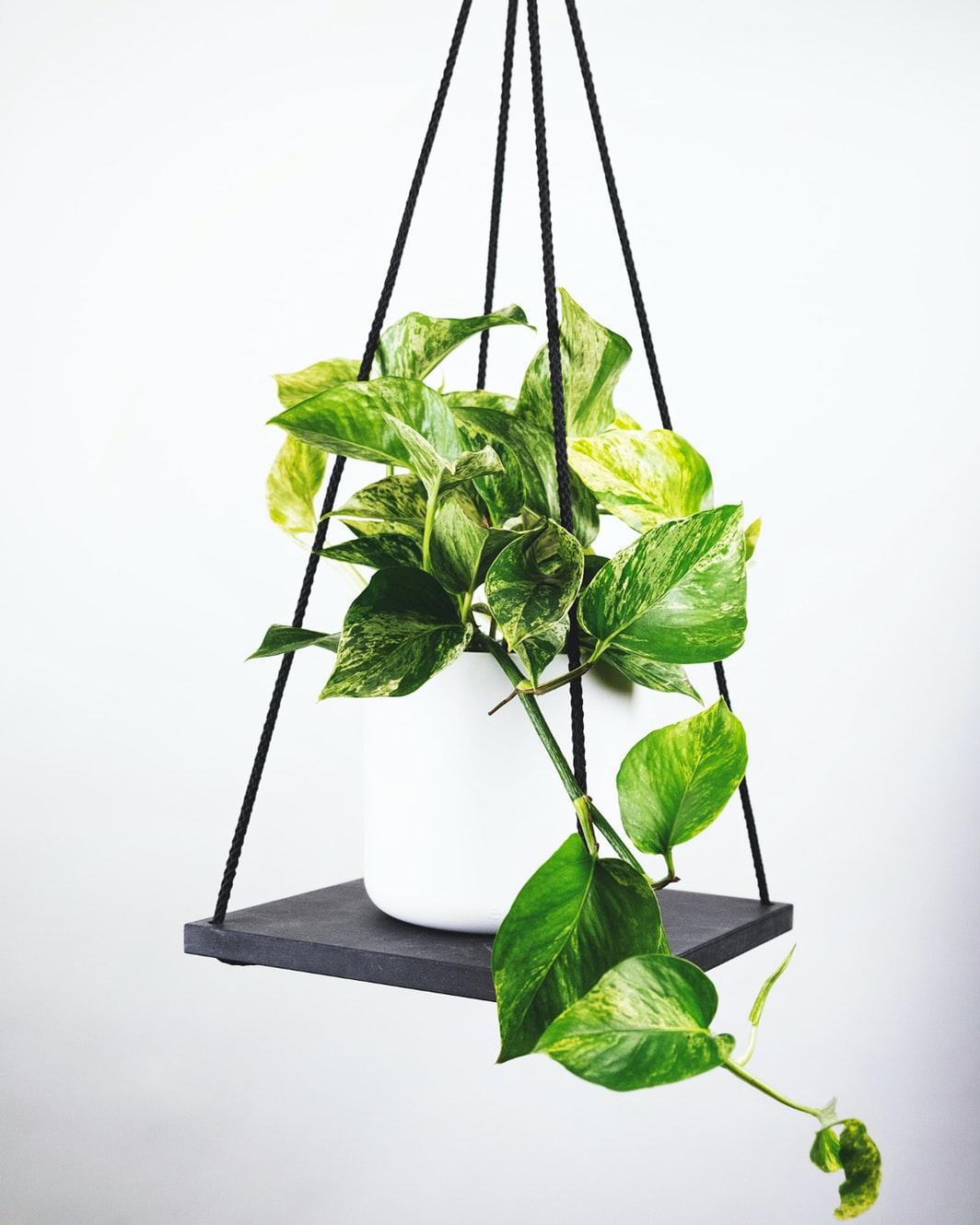
Credit: Unsplash
Manjula Pothos has deep green leaves with yellow streaks running through them. They’re, however, a bit more difficult to care for than other types of pothos and require more attention when it comes to watering and fertilizing.
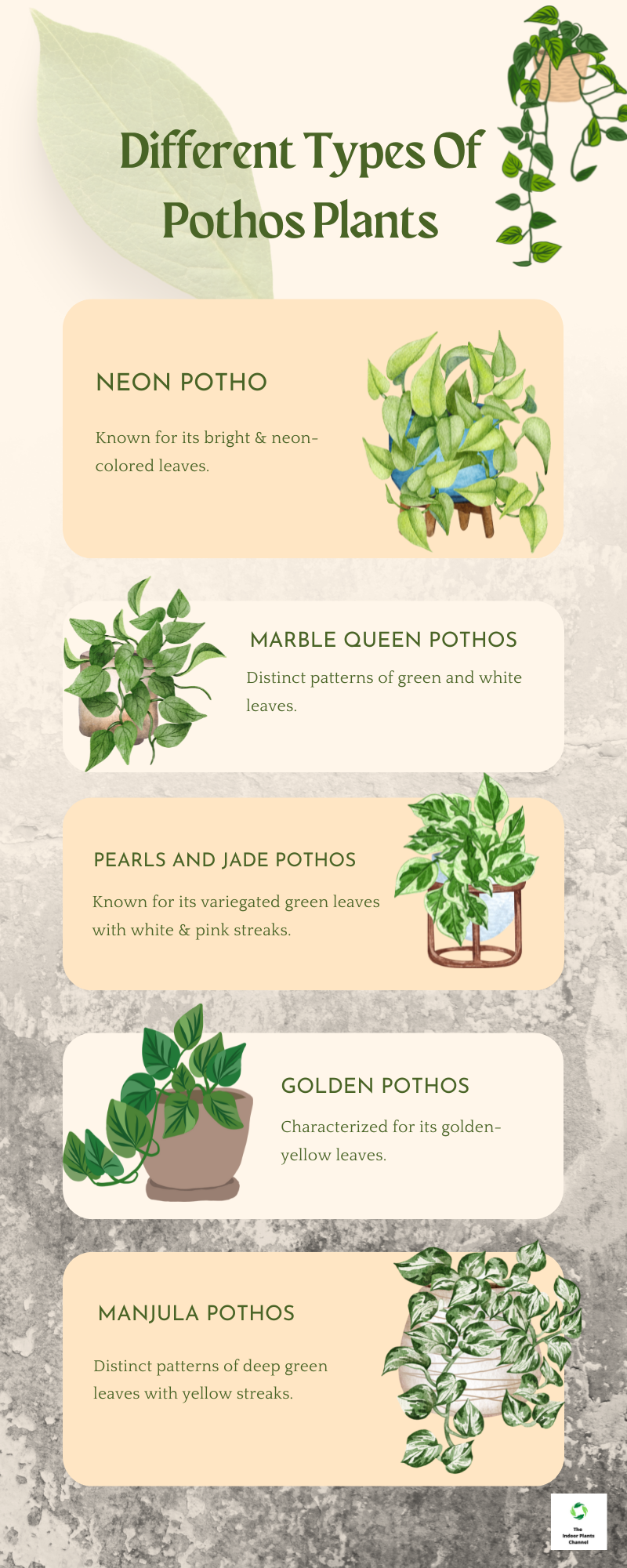
How To Propagate Pothos Plants
Pothos plants are very easy to propagate. You can propagate them from stem cuttings or from root cuttings.
Stem Propagation
- To propagate from stem cuttings, cut a piece of stem that has at least two leaves on it. Cut the stem at a 45 degree angle just below a leaf node. Remove the bottom leaf.
- Dip the cut end of the stem in rooting hormone and then plant it in a pot filled with potting mix. Water the pot well.
- Place the pot in a warm, bright place but out of direct sunlight. Keep the potting mix moist but not wet.
- After a few weeks, you should see new growth. Once the plant has rooted and is growing well, you can transplant it into a larger pot.
Root Propagation
- To propagate from root cuttings, cut a piece of root that is at least 2-3 inches long. Cut the root into 1-2 inch pieces.
- Dip the cut end of each root piece in rooting hormone and then plant it in a pot filled with potting mix. Water the pot well.
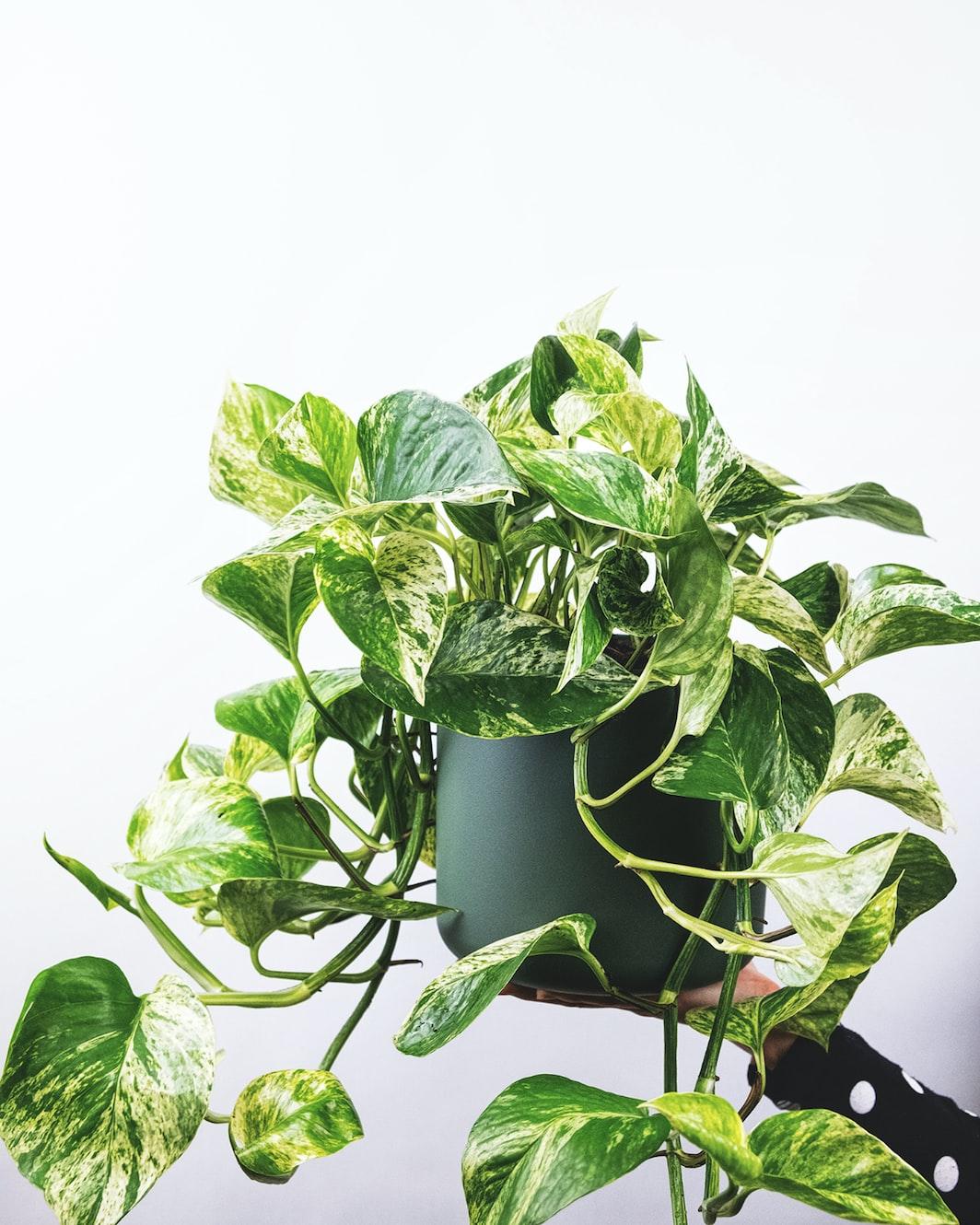
Credit: Unsplash
Frequently Asked Questions About Pothos Plants
What is pothos?
Pothos is a type of flowering plant that belongs to the Araceae family. It is native to tropical and subtropical regions of the world, and is commonly found in Hawaii, the Philippines, and other Pacific islands.
The plant has long, heart-shaped leaves that are variegated with white, yellow, or green. Pothos is a popular houseplant because it is easy to care for and can tolerate low light conditions.
How do I care for a pothos plant?
Pothos plants are relatively easy to care for. They prefer bright, indirect light but can tolerate low light conditions. Allow the soil to dry out between waterings, and fertilize monthly during the growing season. Pothos plants can be propagated by taking stem cuttings and placing them in water or soil.
What are some of the common problems with pothos plants?
Pothos plants are susceptible to a few common problems, such as root rot, leaf spot, and mealybugs.
Root rot is caused by overwatering, and can be prevented by allowing the soil to dry out between waterings.
Leaf spot is a fungal disease that causes brown or black spots on the leaves, and can be treated with a fungicide.
Mealybugs are tiny pests that suck the sap from plants, and can be controlled with an insecticide.
Bonus Tips
- Hang the pothos plant from a ceiling hook or macrame plant hanger.
- Place the pothos plant on a high shelf or in a hanging basket.
- Trail the pothos plant down the side of a bookshelf or cabinet.
- Allow the pothos plant to spill out of a decorative pot on a table or windowsill.
- Create a living wall or vertical garden with pothos plants.
- Train the pothos plant to grow up a trellis, lattice, or wire mesh.
- Wrap the pothos plant around the base of a lamp or other piece of furniture.
- Twist the pothos plant around the rungs of a ladder or other type of frame.
- Pothos plants will grow best if they have bright, indirect sunlight.
Conclusion
Pothos are one of the most popular houseplants for good reasons- they’re easy to care for, beautiful, and they purify the environment. If you’re looking for a plant that will thrive in almost any conditions, pothos is the plant for you.
Fortunately, Our Ultimate Guide for Pothos Plant has all you should know about this amazing indoor plant. Go through the guide and let us know your thoughts in the comments section.
Michelle Wilde
Related posts
7 Comments
Leave a Reply Cancel reply
![]()
About Michelle Wilde
Michelle Wilde is a stay-at-home mom and avid plant lover. Armed with a post-graduate degree in Computer Science (no kidding!), she loves researching plants and landscapes. When she is not caring for her 4 kids, she spends time on her passion for plants. She blogs at www.indoorplantschannel.com, the trusted source for indoor plants.
Learn more
Subscribe
* You will receive the latest posts and updates about indoor plants!
Search
Recent Posts
Categories
- Beginner Guides (10)
- FAQ (206)
- General (2)
- How-To Guides (212)
- Indoor Plants (214)
- Pest Management (2)
- Plant Problem Solutions (4)
- Seasonal Growing (2)
- Specialized Environments (2)
- Specific Plant Care (3)
- Technical Growing (2)
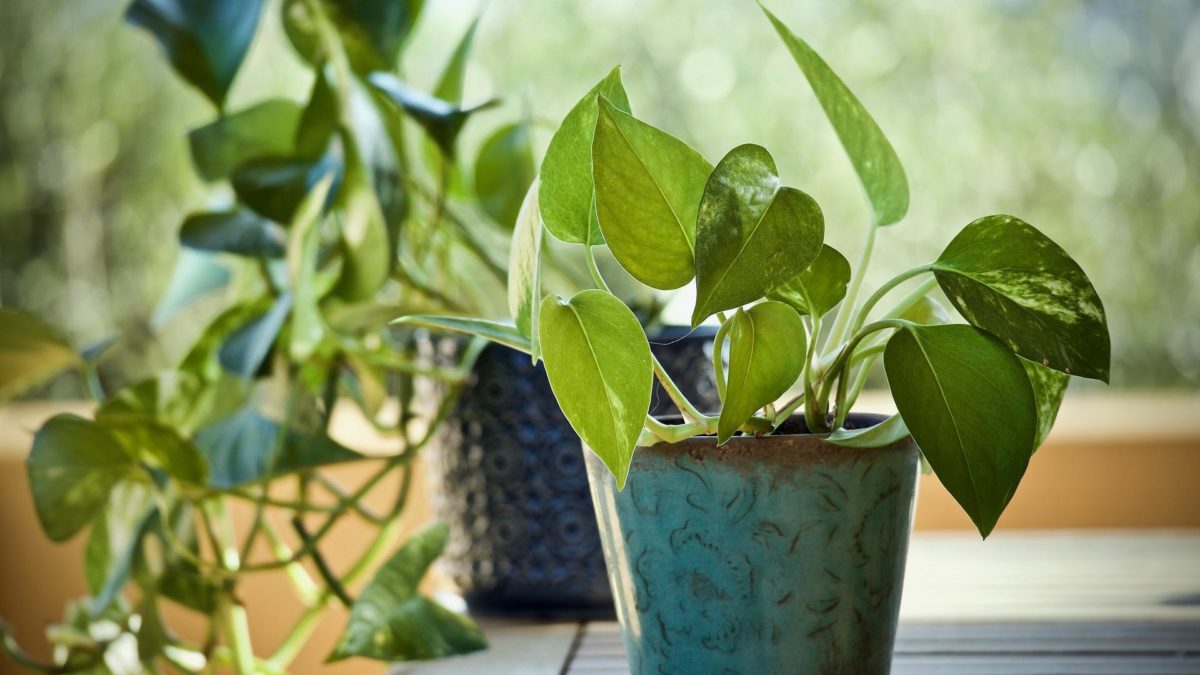
[…] pothos plant is a great indoor plant for a number of reasons. It is easy to care for, does not require a lot of […]
[…] or space? Pothos is the perfect plant for you! In this blog post, we’ll show you how to plant and care for pothos so you can enjoy this beautiful, easy-to-grow […]
[…] Pothos is a versatile plant that can be used in a variety of ways. Here are 10 creative ways to use pothos in your […]
[…] Pothos is a great choice for beginners, as they’re easy to care for and can tolerate a wide range of conditions. […]
[…] pothos is a type of trailing vine. They are easy to care for and can also tolerate a wide range of growing […]
[…] Pothos is a versatile plant that’s able to tolerate a wide range of lighting conditions, from bright indirect light to low light. It’s also able to tolerate a wide range of temperatures, making it a great choice for a variety of environments. […]
[…] love my pothos plant because it’s so easy to care for and it looks […]